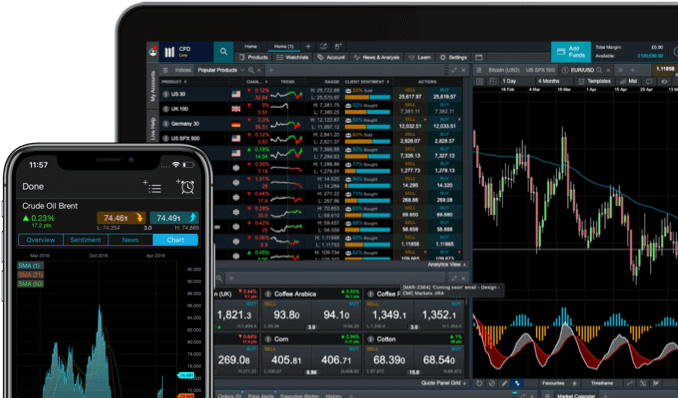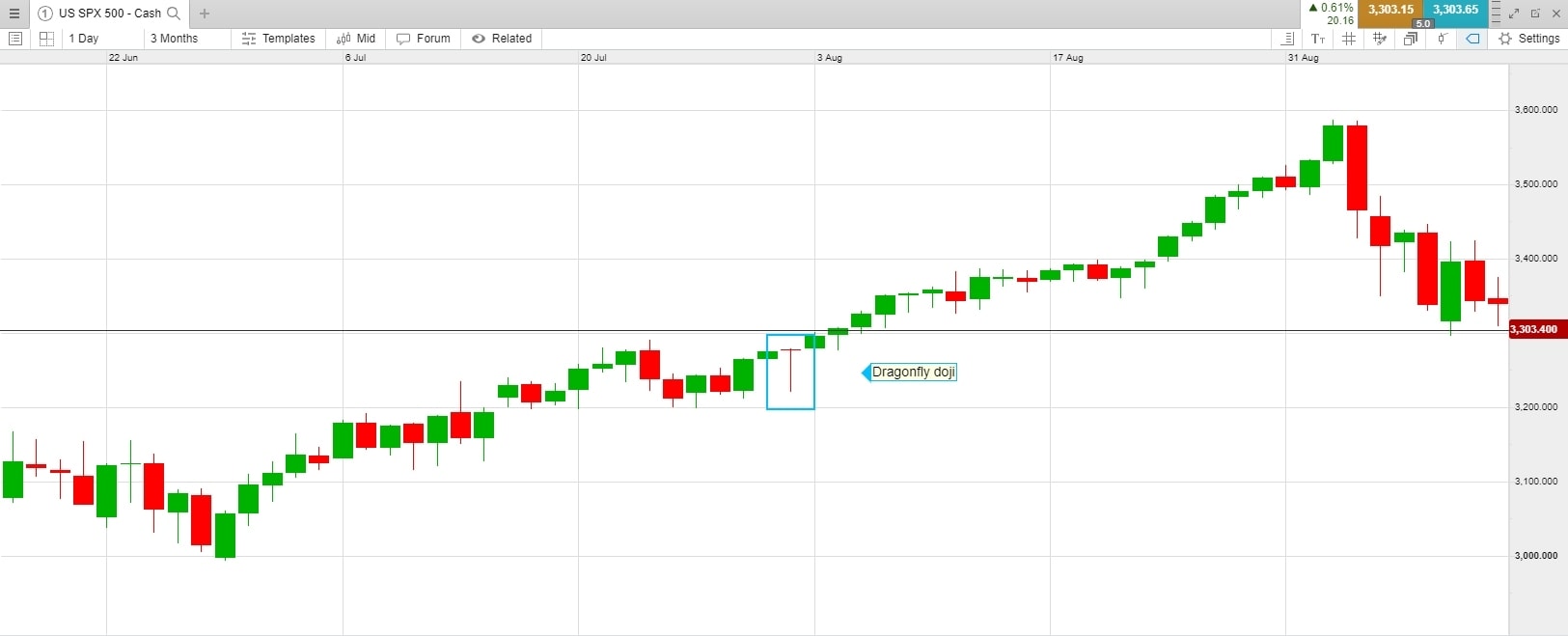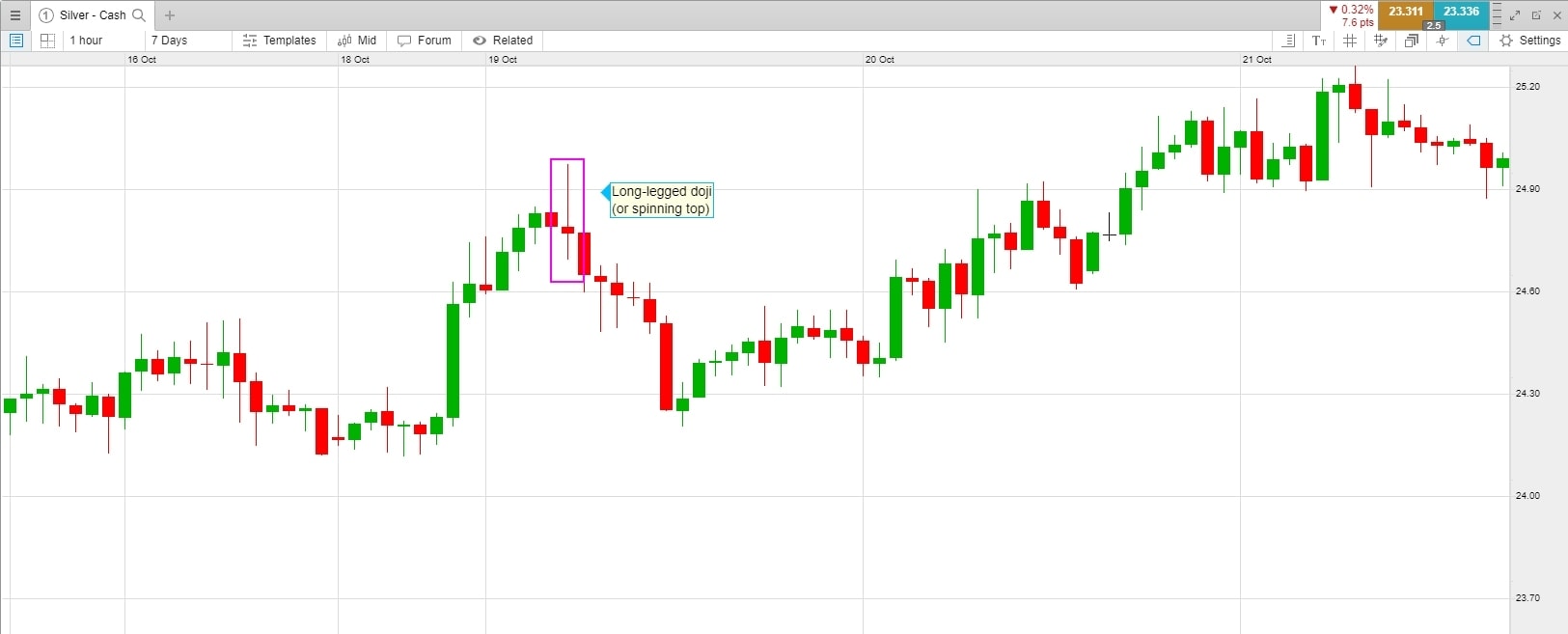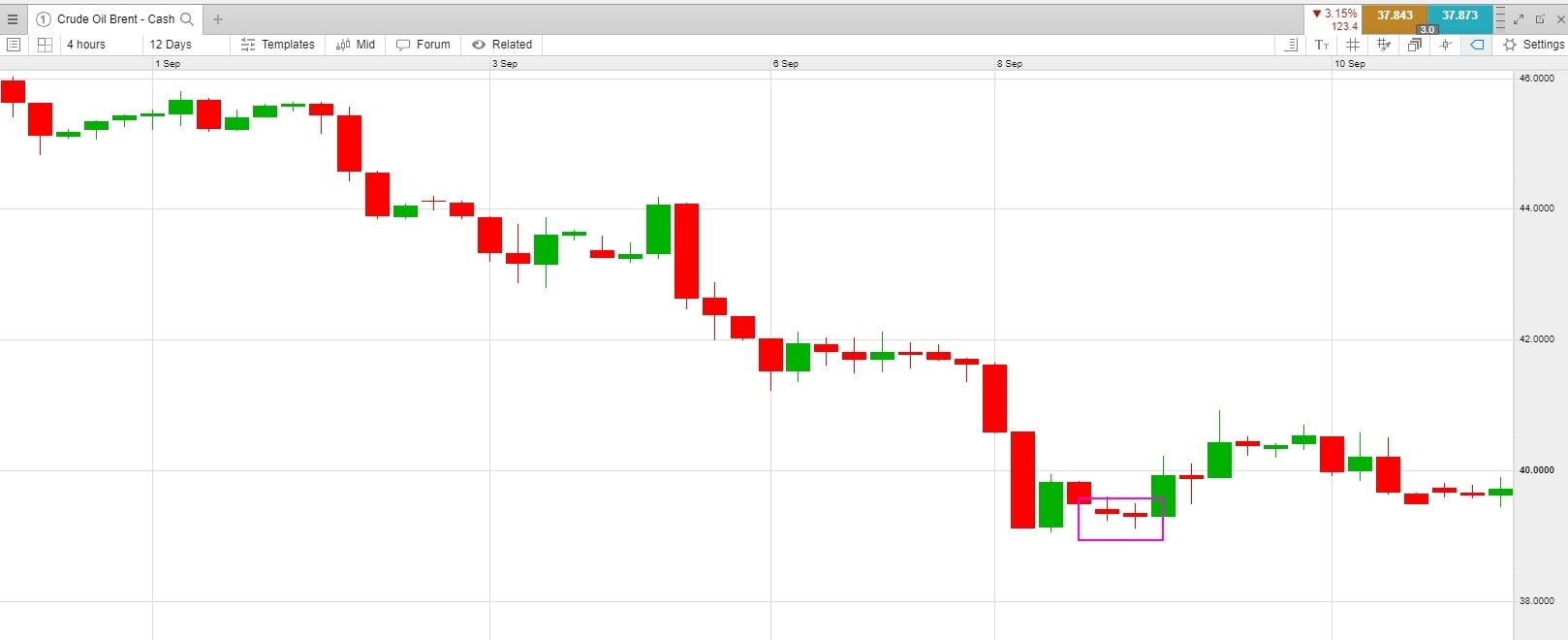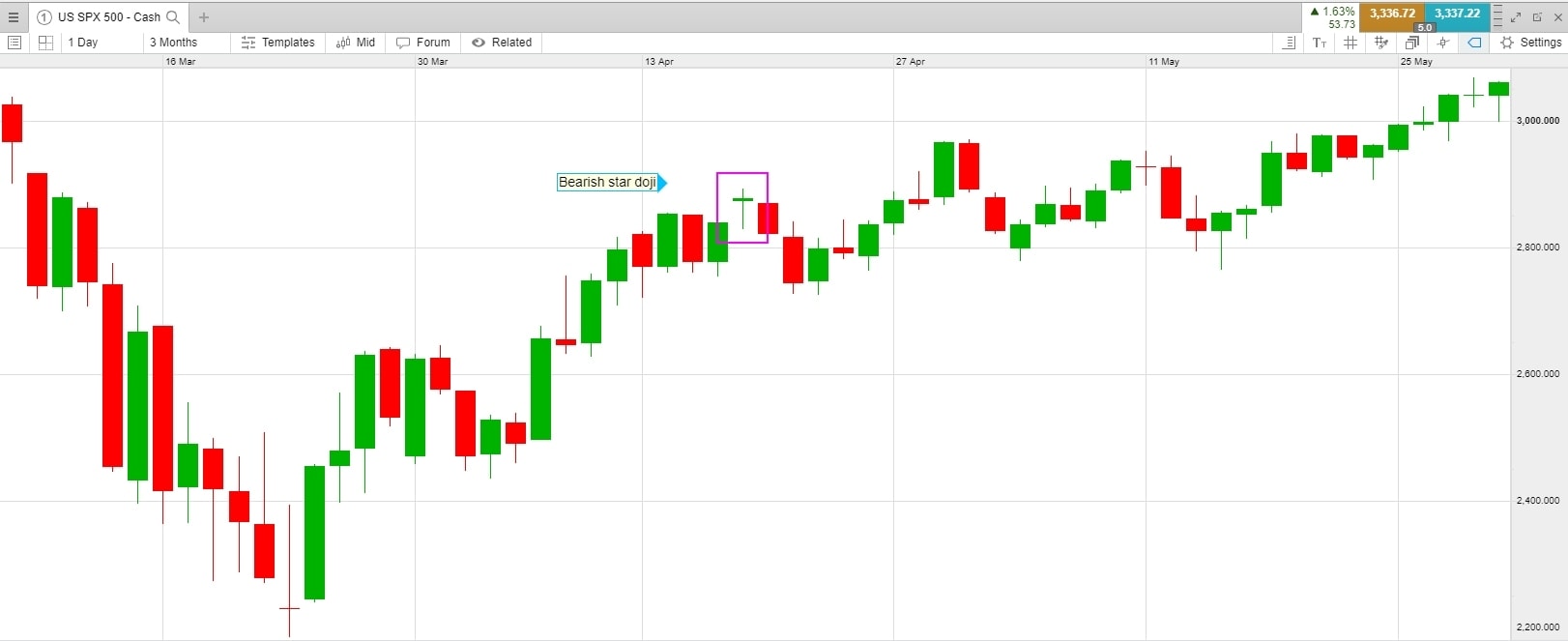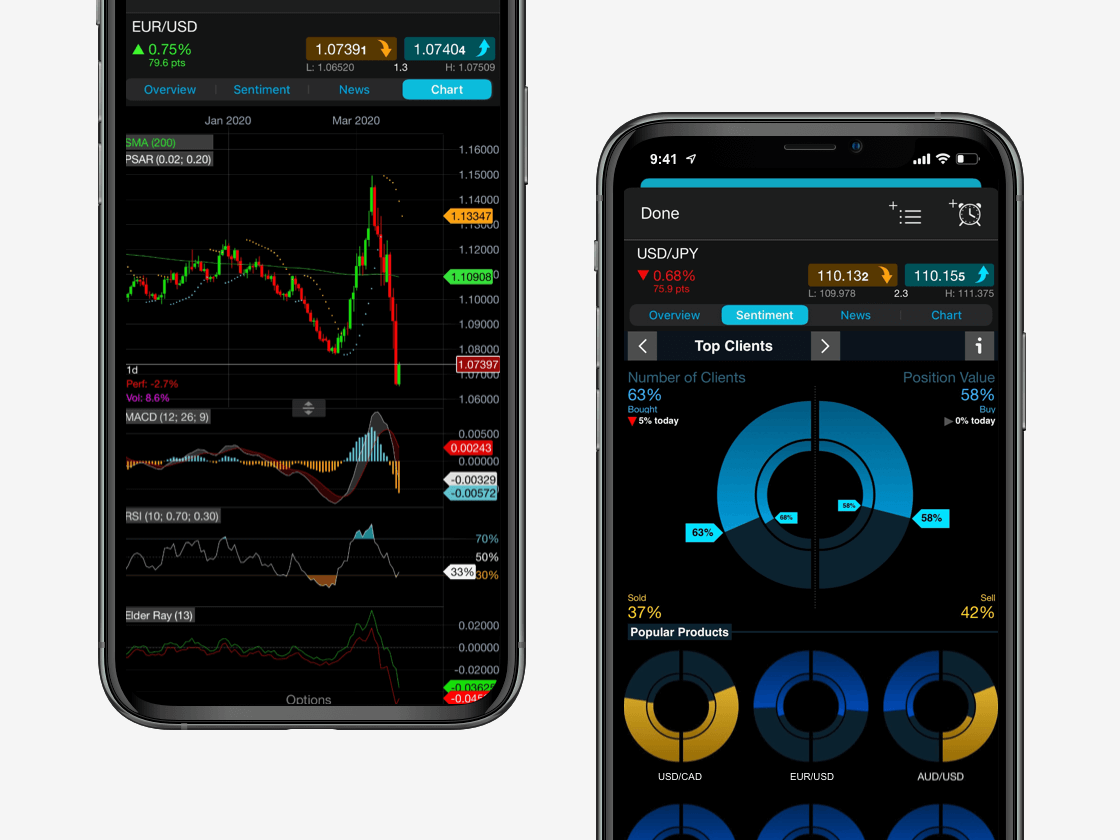A doji tells traders that buyers and sellers were balanced at the end of the day, but this may have big implications. If sellers have been dominating and pushing the price down, a doji suggests that the buyers held their ground. Dojis may indicate bullish and bearish reversals in an asset’s price.
A candlestick has a thick body marking the opening and closing prices. If the close is above the open, the candle is coloured white or green. If the open is below the close, the candle is coloured red or black. The tails or thin lines above and below the body of the candle mark the high price and low price recorded during the time period of the candle. Each candlestick chart pattern says something about the strength of the buyers and sellers within this timeframe. A long green daily candlestick may indicate that the buyers were strong that day, whereas a long red candle may indicate that sellers were strong.
Candlestick traders use this information to make decisions and devise trading strategies. To find out what each type of doji means, we can look at where the high and low points are and where that doji occurs within the trend.


